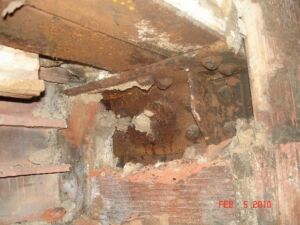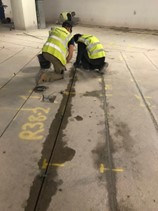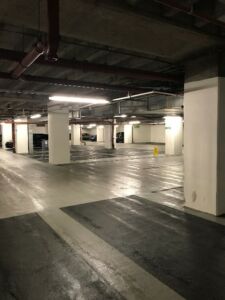The Importance of Using Resilience Management Systems to Preserve Embodied Carbon
Following COP26 in Glasgow earlier this year, there has been an increased focus on committing to regulate embodied carbon within buildings. Norman Foster, of Foster + Partners, spoke at the conference alongside US climate envoy, John Kerry, arguing that current sustainability standards do not focus on embodied carbon and to create sustainable cities we need to pursue “higher standards” for buildings that take into account their whole-life emissions.
Embodied carbon emissions account for half of an average building’s carbon footprint. Countries such as the Netherlands, Germany, France, Sweden, Finland, and Denmark are in the process of implementing regulations to measure and limit the embodied carbon in buildings, whereas the UK has no current standardised certifications or regulations to measure and reduce these emissions. Pressure is rising for action to be taken, particularly as we move towards sustainability targets and population and building stocks continue to grow.
Embodied carbon describes the greenhouse gases associated with the construction materials and processes used to construct, maintain, and manage our built environment to the end of service life. Estimates vary, but globally, it is around 10% of energy related carbon dioxide emissions (UNEP 2020). To successfully preserve embodied carbon emissions, we must start with the fabric of the structure, particularly existing ones, placing an emphasis on utilising available technology to preserve and decarbonise the built environment for the future. Ueli M. Angst concurs, highlighting the effects of steel corrosion and the challenges society faces maintaining existing ageing infrastructure in developed countries and establishing more sustainable infrastructure in emerging countries.
How much of an issue is structural corrosion? Corrosion is the primary cause of structural degradation (NACE found that it’s responsible for 70% of damage in their Impact Report), which significantly reduces service life and value of the asset. Implementing control systems, that use cathodic protection to control corrosion of the steel, could benefit ageing structures greatly, but there is a lack of wider adoption due to lack of awareness of the benefits, as well as uncertainty around risks involved with adopting new technology. The electrochemical process of cathodic protection, and the use of this in resilience management systems, is proven to be effective corrosion control, therefore preserving the structure and tonnes of embodied carbon emissions.
Figure 1- Structural corrosion is responsible for 70% of infrastructure damage (NACE Impact Report, 2016
By bringing together standard practices that already exist for the maintenance of structures, we can see how the use of resilience management systems can benefit service life and preserve embodied carbon. For example:
- ISO15686 (service life planning)
- ISO 12696, ISO15257 (design and use of cathodic protection for atmospherically exposed reinforced concrete and masonry structures) and
- BSI PAS2035 where a Fabric First approach to durability can offer significant cost advantages and sustainable legacy gains through control of degradation of any structure at all stages of its service life.
The protection of the Omni Centre MSCP, in Edinburgh is one of many real-life case studies which demonstrate the effectiveness of resilience management systems. This is an underground reinforced concrete car park on 4-levels where cracking and spalling of the concrete cover to reinforcement steel arose from the ingress of de-icing salts from traffic accelerating corrosion.
The support beams and deck were structurally repaired traditionally, and a multi-faceted corrosion management strategy was designed on a level-by-level basis derived from a comprehensive concrete and steel condition survey undertaken by the consulting team. An impressed current cathodic protection (ICCP) system was installed to 2-levels and interconnecting ramps that demonstrated high corrosion activity in the form of an innovative low carbon anode mortar. This was implemented within chases cut into the deck and over the top of the beams. Galvanic (zinc) anodes and surface-applied corrosion inhibitors were used to areas less actively corroding to prevent future corrosion developing. All decks were installed with performance monitoring with data accessed online from open and interoperable network with ICCP controlled remotely.
The outcome is an existing concrete structure being protected from corrosion by retrofitting technology, whilst online monitoring of the installed resilience system provides a permanent data-rich record of the structure’s performance. The restoration approach is ESG compliant as reconstruction was also a near-impossible strategy due to underground facility and electric tramlines on land, meaning a non-disruptive cathodic protection method was essential to minimise social disruption, whilst successfully increasing service life and preserving vital embodied carbon with low carbon sustainable materials.
Figure 2 & 3 – Restoration works being carried out on the Omni Centre Car Park and the finished result.
The installation of resilience management systems, which provide corrosion protection and service life tracking of a structure, are incredibly vital to the increasing pressure of retaining embodied carbon of UK building stock.
Structural corrosion is a bigger issue than reported, and there are existing standards which can influence the implementation of the systems which will protect buildings from degradation and whilst improving their efficiency and asset value. COP26 was a highly influential event increasing awareness on the embodied carbon as an issue, and it is clear that the UK still needs to make progress in order to change and accept that existing, and effective, technology will play a significant part.
Buildoffsite’s upcoming webinar with C-Probe Systems and The MTC will look at this in depth, highlighting the alkali activated cementitious material (AACM) innovation that is currently being used by C-Probe for corrosion prevention and control, which ultimately leads to whole life protection of the structure, alongside preservation of embodied carbon. This innovation has recently been developed into a product component used for modular implementation into new build structures, providing corrosion protection and monitoring from the birth of the structure. This offsite product is part of a “kit of parts” offering a route for sustainable resilience of new building stock and retaining initial embodied carbon forever.
Preserving embodied CO2 with resilience management systems will take place on the 16th June at 9:15-10:30am. It is free for Buildoffsite members and £45 for non-members. Please register online, or please complete and return the booking form to James Nguyen.



